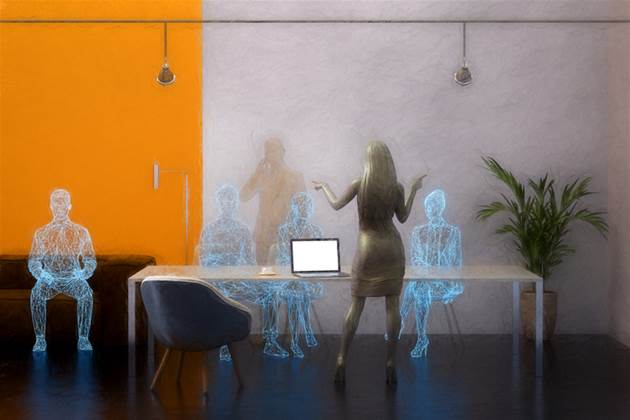Imagine attending work meetings by popping on a virtual reality (VR) headset and interacting with your peers or doing social activities by interacting with avatars representing your employees, with the “intraverse” this is already happening.

The intraverse is the amalgamation of the intranet and metaverse, a place for employees to interact within an organisation’s ecosystem.
Gartner defines the intraverse as an internal implementation of the metaverse fulfilling many of the roles an intranet plays today, the intraverse will have the same characteristics as the metaverse but within the boundaries of a single company.
At the Gartner IT Symposium in the Gold Coast, several leaders described what an intraverse does and how it can help executives with hybrid working.
Marty Resnick, VP analyst at Gartner told Digital Nation Australia that the idea of the intraverse came from expanding an organisation’s intranet capabilities.
He said, “What we're finding is that companies are now adding metaverse virtual offices as part of their intranet initiatives. If they're going to upgrade their intranet because they're dealing with all these flexible work styles and a dispersed geographic employee base, their intranet wasn’t enough.
“They were updating it and at the same time, they were saying maybe we can start creating virtual offices. Let’s bring those initiatives together.”
As metaverse elements propagate across the internet, organisations will create their own intraverse to host internal operations.
Some of these operations including learning, procurement, onboarding and live events — will occur in virtual spaces. The physical office space will have virtual overlays to help employees navigate, understand and optimise the space.
Benefits
Resnick described the benefits of the intraverse, firstly there is a collaboration advantage.
“We collaborate better in person and so the idea is with some of these metaverse technologies we can collaborate better, especially for product design, design thinking, those brainstorming sessions, because right now, but you have Teams, WebEx and all these different screens and it doesn't facilitate collaboration,” he explained.
Secondly, the intraverse can bring about engagement through VR, Resnick said.
“When I'm in VR, I'm forced to be engaged because I don't have five or six different screens up. There's that spatial audio aspect where all of a sudden something comes over you as if you're present and people can see what you're doing,” he said.
The intraverse brings about additional connectedness between employees.
Resnick said, “When I go into a virtual office, I'm still commuting into an office, I still feel like I'm part of the company. When we work from home, I have all these calls, but I am I a part of Gartner or am I another member of the meeting.”
When presenting the idea of the intraverse to organisations, Resnick said he tells leaders to introduce it to a small number of staff to test it out, first individually and then in a group social setting.
“They get used to the environment, and then they have a very targeted meeting. What's important when it comes to virtual meetings, for example, is the goal is not to replace every meeting that you have all day because you're not going to spend eight hours a day in VR. You're not going to want to, and in certain meetings, there's no reason we need to be VR,” he explained.
As the technology is in its infancy, there are no hard statistics backing up the success of the intraverse but Resnick said he is receiving positive feedback.
“What we're seeing is more of the soft stuff, I feel more connected, I feel more engaged. Now in product design, there are very specific metrics that they're looking at.
“I come from oil and gas and so we did an experiment with VR with flare tips and people can zoom in and see the engineering aspects of converting CAD to VR. It wasn't necessarily a metric, but it was a better way that we can collaborate and see and ultimately, stop those defects from happening,” he added.
Tina Nunno distinguished VP Analyst at Gartner addressed the scepticism of using an intraverse noting that employees’ adaptability to technology has changed over the past two years.
“But consider that the same local pandemic which created the hybrid word challenge, radically increased the digital skill sets of the average worker and has brought the virtual world and many other innovations within reach for millions of employees,” she said.
“If you experiment with an intraverse, maybe your employees will like it, but maybe only a few of them will use it. But if you were highly visible without it, they will know that you tried.”
Athina Mallis travelled to the Gartner IT Symposium as a guest of Gartner.




.png&h=140&w=231&c=1&s=0)





 iTnews Executive Retreat - Security Leaders Edition
iTnews Executive Retreat - Security Leaders Edition












_(1).jpg&h=140&w=231&c=1&s=0)



